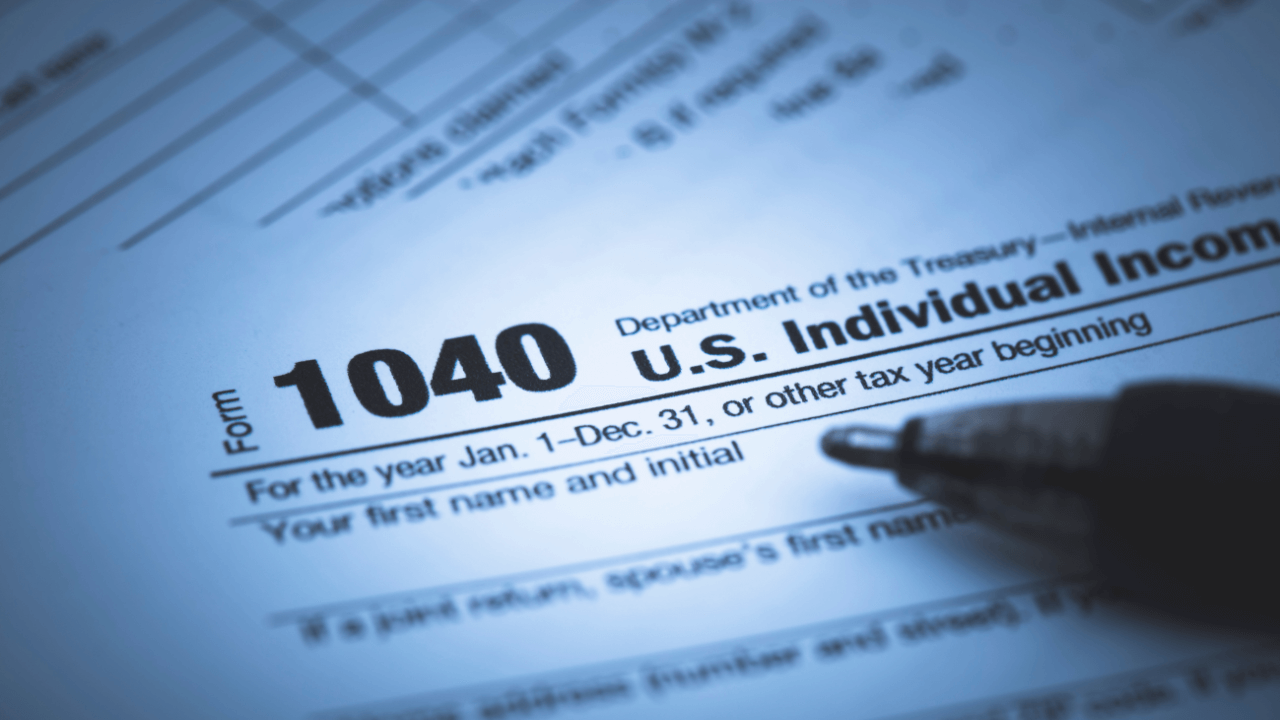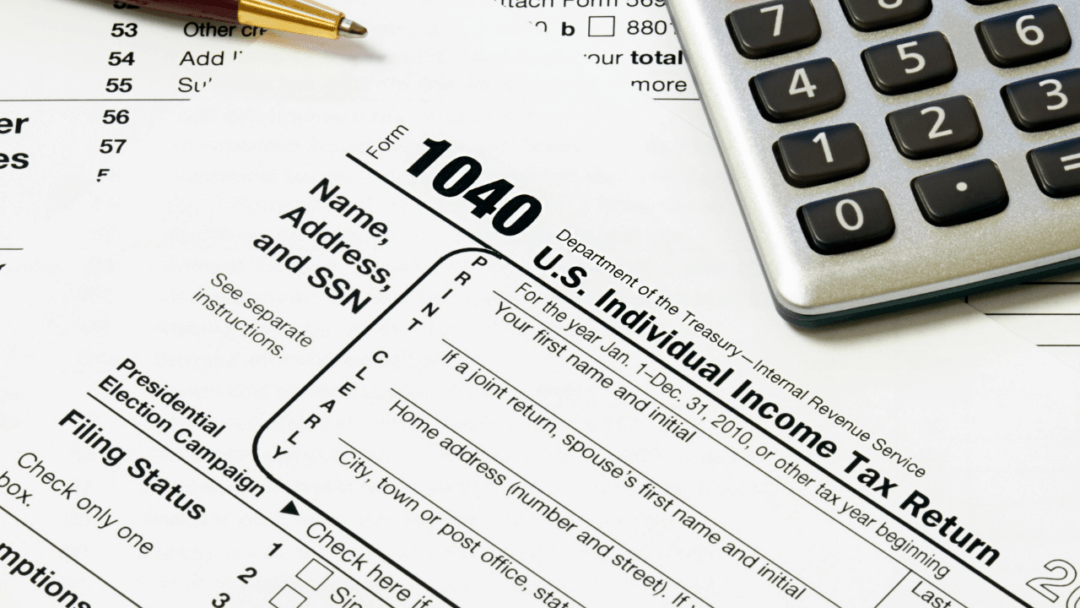Language:
What Is IRS Form 1040 and What Do I Do With It?

If you’re an LLC owner, self-employed, or running a small business, taxes can feel overwhelming. One of the most important forms you’ll encounter is IRS Form 1040.
This form is the foundation of your personal income tax return. But what does it mean for you, and how do you handle it properly?
In this article, we’ll explain what IRS Form 1040 is and why it matters, especially for business owners like yourself. Whether you’re filing taxes for your LLC, need to fill out a Schedule C, or are self-employed, understanding this form is crucial for getting your taxes right.
Form 1040 is where you report your income, calculate taxes owed, and determine any refunds. If you’re running an LLC or working as a sole proprietor, you’ll also need to know how to report your business income on this form.
We’ll break down everything step by step to help you navigate the process with confidence.
Looking for a simpler way to handle your tax filings? Explore doola for all your LLC tax filing needs. Whether you’re self-employed or running a growing business, doola’s Tax Package helps make tax season stress-free.
Let’s dive in and make Form 1040 easy to understand and manage.
What Is IRS Form 1040?
IRS Form 1040 is the standard tax form most U.S. taxpayers use to report their annual income to the IRS. It helps individuals calculate their tax owes or whether they’re eligible for a refund.
This form includes sections to report your income, claim deductions, and apply for credits. It’s essential for every taxpayer, as it captures a comprehensive overview of their financial year.
There are different versions of Form 1040:
- Form 1040: The standard version used by most taxpayers.
- Form 1040-SR: Designed for seniors aged 65 or older, offering larger print and slightly different formatting, but it’s otherwise identical to the regular Form 1040.
- Form 1040-NR: Used by non-resident aliens to report U.S. income and taxes.
Why It Matters for LLC Owners
If you own an LLC, especially if you’re the only member, Form 1040 is essential. The IRS treats most single-member LLCs as “disregarded entities,” which means your LLC’s income is considered your personal income.
You’ll report this income on your individual tax return using Form 1040, specifically through Schedule C. This form lets you detail your LLC’s earnings and expenses, showing your net income or loss for the year.
Multi-member LLCs generally file a separate partnership tax return (Form 1065), but the profits and losses still get passed down to the individual members, who report them on their Form 1040.
Self-Employed and Form 1040
If you’re self-employed through an LLC, you’ll not only report your business income on Form 1040, but you’ll also need to account for self-employment taxes.
This means paying both the employer and employee portions of Social Security and Medicare taxes. It’s essential to include this when you calculate your total tax liability on your 1040.
When Do LLC Owners Use IRS Form 1040?

If you own an LLC, understanding IRS Form 1040 is essential for filing your taxes. The type of LLC you own — single-member, multi-member, or self-employed LLC — determines how you’ll report income and what additional forms you’ll need.
Here’s a clear breakdown of when and how LLC owners use IRS Form 1040.
Single-Member LLCs and Schedule C
A single-member LLC is considered a “disregarded entity” by the IRS. This means that, for tax purposes, it’s treated as a sole proprietorship by default.
Instead of filing a separate business tax return, all of your business income and expenses are reported directly on your income tax return using IRS Form 1040.
Schedule C for Single-Member LLCs
To report your business’s financial activity, you’ll need to fill out Schedule C (Profit or Loss from Business) and attach it to your Form 1040. Schedule C is where you detail your business income and list all business-related expenses.
- Business Income: On Schedule C, you’ll report all the income your business generated during the year. This includes sales, payments for services, and other forms of revenue.
- Business Expenses: Here’s where you deduct allowable business expenses. The more expenses you accurately report, the lower your taxable income may be, which reduces your overall tax burden.
For example, if your business earned $100,000 in revenue but had $40,000 in expenses, your net business income (which you report on Schedule C) would be $60,000.
This net income then flows to your Form 1040, where it’s added to any other income you might have — like wages, interest, or dividends.
What Happens Next?
Once you complete Schedule C, the information gets transferred to Form 1040, which is combined with your personal income.
You’ll also be responsible for paying self-employment tax, which covers Social Security and Medicare taxes. This is reported separately on Schedule SE but is based on the net income reported on Schedule C.
This approach simplifies tax filing for single-member LLCs by default because it combines business and personal taxes into one form.
You won’t need to file a separate business return unless you’ve elected a different tax status (like an S-corp, which we’ll discuss later).
Multi-Member LLCs and Form 1065
Things get more complex with a multi-member LLC. In this case, the LLC is treated as a partnership for tax purposes, and a separate tax form, Form 1065 (U.S. Return of Partnership Income), is required.
Form 1065 reports the LLC’s total income and expenses for the year, but it doesn’t calculate taxes. Instead, it provides the IRS with details about the business’s profits or losses.
How It Impacts Personal Taxes
Even though the LLC files Form 1065, each member of the LLC must still report their share of the LLC’s income on their personal Form 1040.
The LLC provides each member with a Schedule K-1, which shows the share of the business’s income, deductions, and credits allocated to them. Each member uses this Schedule K-1 to fill out their Form 1040.
For example, if you and another person each own 50% of a multi-member LLC, and the LLC earned $200,000 in profit, your Schedule K-1 would show $100,000 as your share of the income. You would then report this $100,000 on your personal Form 1040.
While multi-member LLCs file a separate business return, the personal income reporting process for members remains linked to Form 1040.
So, regardless of the complexity of the business, Form 1040 is still central to filing your personal taxes as an LLC member.
Self-Employed LLC and Tax Filing
If you’re the owner of a single-member LLC, you’re considered self-employed for tax purposes.
This means you’re responsible for not only reporting your business income and expenses on Schedule C but also paying self-employment taxes through your Form 1040.
Quarterly Estimated Taxes
As a self-employed LLC owner, you don’t have an employer withholding taxes from your paycheck.
Instead, you’re required to estimate how much you’ll owe in taxes for the year and make quarterly estimated tax payments to the IRS. These payments cover both income tax and self-employment tax.
Here’s a quick rundown of what you’ll need to stay on top of:
- Income Tax: You’ll estimate your total tax liability based on your income. Since LLC income is reported on Form 1040, this amount should include your business’s net profit (from Schedule C) plus any other sources of income.
- Self-Employment Tax: You’ll also need to pay self-employment tax, which is 15.3% of your net earnings from self-employment (12.4% for Social Security and 2.9% for Medicare).
If you don’t pay these taxes quarterly, you could face penalties when you file your annual return. Many LLC owners use Form 1040-ES to calculate and submit these payments.
How to Complete IRS Form 1040 for LLC Owners
With the groundwork laid, let’s delve into the specifics of completing IRS Form 1040 for your LLC.
- Personal Information: Start by entering your name, Social Security number, and filing status (e.g., single, married, filing jointly).
- Income Section: Report your business income using Schedule C if you’re a single-member LLC. This includes all revenue and business expenses. Don’t forget to include other income, such as wages, interest, or dividends, if applicable.
- Deductions and Credits: LLC owners can claim common deductions like the home office deduction, health insurance premiums, and business-related travel. If you’re self-employed, you can also deduct half of your self-employment tax here.
- Self-Employment Tax: Calculate your self-employment tax using Schedule SE and report it on Form 1040. This covers your Social Security and Medicare contributions.
- Payments and Refunds Check the “Payments” section to see if you owe taxes or are due for a refund. If you’ve made estimated tax payments throughout the year, report them here.
Need help simplifying your tax filing? Check out doola’s tax package. We’ll make it easy to handle everything from deductions to payments so you can focus on growing your LLC.
Schedule C: A Crucial Form for LLC Owners
Schedule C is the form LLC owners use to report income or loss from a business that’s taxed as a sole proprietorship. If you’re a single-member LLC, you’ll file this with your Form 1040 to show how much your business earned or lost during the year.
How to Complete Schedule C
Start by entering your total business income in Part I. Next, list your business expenses in Part II, such as supplies, advertising, and professional fees.
Subtract your expenses from your income to calculate your net profit or loss, which flows directly to your Form 1040.
Schedule C is essential for reporting your business income and making sure you claim all eligible deductions. By doing it right, you can save on taxes and avoid issues with the IRS.
What If My LLC Elects to Be Taxed as an S-Corp or C-Corp?

When an LLC elects to be taxed as an S-Corp or C-Corp, the tax filing process changes significantly. Instead of reporting your business income on Schedule C with Form 1040, the LLC must file separate tax forms.
For C-Corps, you’ll file Form 1120, which is used to report the corporation’s income, gains, and losses. C-Corps are taxed separately from their owners, meaning the LLC pays corporate taxes.
For S-Corps, you’ll file Form 1120S. This form reports income, but the profits and losses “pass-through” to the owners and are included on your personal tax return (Form 1040).
S-Corp owners don’t pay self-employment taxes on their salary; they only pay their share of the income.
Confused? Let doola’s Total Compliance Package guide you through the entire process, ensuring you file correctly and avoid costly mistakes.
Critical Deadlines and Penalties for Filing Form 1040
For LLC owners, Form 1040 is due by April 15 each year or the next business day if it falls on a weekend or holiday.
If you’re self-employed, you also need to make quarterly estimated tax payments on April 15, June 15, September 15, and January 15 of the following year. Missing these deadlines can lead to penalties.
The IRS charges a penalty of 5% of unpaid taxes for each month you’re late, up to 25%. There’s also a failure-to-pay penalty of 0.5% per month.
Missing payments can quickly add up for self-employed LLC owners, so it’s essential to stay on top of deadlines.
Common Mistakes to Avoid When Filing Form 1040
Incorrect Income Reporting
A common mistake LLC owners make when filing Form 1040 is failing to report all income.
Forgetting to include income from side jobs or freelance work can trigger an audit. Double-check all your income sources, including 1099 forms, and make sure everything matches your records.
Missing deductions is another issue — don’t overlook business expenses that could reduce your taxable income.
Not Filing Estimated Taxes
If you’re self-employed, you must pay quarterly estimated taxes. Many LLC owners forget or underestimate these payments, which can lead to penalties.
The IRS expects you to pay taxes as you earn income, so missing these deadlines adds up. Calculate your estimated taxes based on last year’s return, or use IRS tools to avoid costly surprises.
Failing to Report All Deductions
LLC owners often miss deductions that could save them money. Commonly overlooked deductions include home office expenses, business mileage, and depreciation of equipment.
Keeping detailed records of your business-related expenses throughout the year ensures you don’t leave money on the table come tax time.
Manage Tax Compliance With doola

To overcome the complexity of tax filings, it is always better to invest in an expert opinion.
doola offers a perfect combination of both, along with multiple other perks, to transform your tax filing experience and help you embark on a worry-free business journey.
doola’s Total Compliance Package is a bundled offering with comprehensive features for businesses of all sizes and scales. You can leave your worries to our tax experts and also use our extensive bookkeeping solution for payroll management.
Right from business formation to running your business from any part of the world and taxation or compliance — doola walks you through every step of the journey, ensuring you enjoy a stress-free business.
Want to learn more about how we can help you? Schedule a tax consultation with us today!



